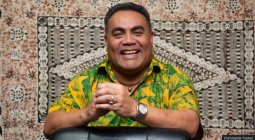“Global interest in Arctic destinations has grown, driven by a desire for adventurous experiences and awareness of climate change,” said Anne Nivíka, the chief executive of Visit Greenland.
The building of Nuuk airport has been an essential part of Greenland’s response to the interest. Until Thursday, there were no direct international flights to Greenland’s capital, home to 19,783 of the territory’s 56,865 people.
Previously, the first stop would have been a former US military base in Kangerlussuaq, 200 miles (320km) north of Nuuk, followed by a further internal flight on a small plane. It will now take 4hr 50min to get to Nuuk from Copenhagen, cutting hours off the previous best option.
Christian Keldsen, the director of the Greenland Business Association, said he feared the move towards protectionism had been in part inspired by Denmark’s colonial past and concerns about further exploitation by foreign powers.
Greenland, whose land mass exceeds that of Austria, Belgium, Denmark, France, Germany, Ireland, Italy, Poland, Portugal, the Netherlands and the UK combined, is today a self-governing territory within the Kingdom of Denmark but until 1953 it was a colony.
The US built military bases on the island at the start of the second world war and then into the cold war. In 1946, US officials even offered to buy Greenland from its colonial power, Denmark, for $100m in gold bars, a suggestion repeated by Donald Trump in his first term in the White House.
The government has written in a two-year transition period to the tourism law. But Keldsen said the ambitions in Greenland for a larger tourism sector could not be achieved without international investment. “But for now that could be where we are in the development,” he said. “We are moving forward, and Greenland wants control of this evolution.”



